(продана за $117.0)
Mint Place: Paris. Medallist: Du Vivier Condition: A nice XF! References: Feuardent 4409. var. Mint year: 1780s (original strike!) Denomination: Medal (Jetton) - Royal Academy of Sciences Diameter: 28mm Material: Silver Weight: 7.92gm
Obverse: Head of Louis XVI right. Medallist´s signature (DU VIV.) below. Legend: LUD . XV . REX - CHRISTIANISS . / DU VIV. Reverse: Seated togate Athena, holding spear, surrounded by symbols of science (chemistry, geography, geometry, astronomy...). Legend: INVENIT ET PERFICIT Exergue: REGIA SCIENTIARUM ACADEMIA
The French Academy of Sciences (French: Académie des sciences) is a learned society, founded in 1666 by Louis XIV at the suggestion of Jean-Baptiste Colbert, to encourage and protect the spirit of French scientific research. It was at the forefront of scientific developments in Europe in the 17th and 18th centuries, and is one of the earliest Academies of Sciences. Today, it is one of the five Académies of Institut de France.
The Academy of Sciences owes its origin to Colbert's plan to create a general academy. He chose a small group of scholars who met on 22 December 1666 in the King's library, and thereafter held twice-weekly working meetings there. The first 30 years of the Academy's existence were relatively informal, since no statutes had as yet been laid down for the institution. In contrast to its British counterpart, the Academy was founded as an organ of government. The Academy was expected to remain apolitical, and to avoid discussion of religious and social issues (Conner, 2005, p. 385).
On 20 January 1699, Louis XIV gave the Company its first rules. The Academy received the name of Royal Academy of Sciences and was installed in the Louvre in Paris. Following this reform, the Academy began publishing a volume each year with information on all the work done by its members and obituaries for members who had died. This reform also codified the method by which members of the Academy could receive pensions for their work. On 8 August 1793, the National Convention abolished all the academies. On 22 August 1795, a National Institute of Sciences and Arts was put in place, bringing together the old academies of the sciences, literature and arts, among them the Académie française and the Académie des sciences. Almost all the old members of the previously abolished Académie were formally re-elected and retook their ancient seats. Among the exceptions was Dominique, comte de Cassini, who refused to take his seat. Membership in the Academy was not restricted to scientists: in 1798 Napoleon Bonaparte was elected a member of the Academy and three years later a president in connection with his Egyptian expedition, which had a scientific component. In 1816, the again renamed "Royal Academy of Sciences" became autonomous, while forming part of the Institute of France; the head of State became its patron. In the Second Republic, the name returned to Académie des sciences. During this period, the Academy was funded by and accountable to the Ministry of Public Instruction. The Academy came to control French patent laws in the course of the eighteenth century, acting as the liaison of artisans' knowledge to the public domain. As a result, academicians dominated technological activities in France (Conner, 2005, p. 385). The Academy proceedings were published under the name Comptes rendus de l'Académie des sciences (1835–1965). The Comptes rendus is now a journal series with seven titles. The publications can be found on site of the French National Library.
In 1818 the French Academy of Sciences launched a competition to explain the properties of light. The civil engineer Augustin-Jean Fresnel entered this competition by submitting a new wave theory of light. Siméon Denis Poisson, one of the members of the judging committee, studied Fresnel's theory in detail. Being a supporter of the particle-theory of light, he looked for a way to disprove it. Poisson thought that he had found a flaw when he demonstrate that Fresnel's theory predicts that an on-axis bright spot would exist in the shadow of a circular obstacle, where there should be complete darkness according to the particle-theory of light. The Poisson spot is not easily observed in every-day situations, so it was only natural for Poisson to interpret it as an absurd result and that it should disprove Fresnel's theory. However, the head of the committee, Dominique-François-Jean Arago, and who incidentally later became Prime Minister of France, decided to perform the experiment in more detail. He molded a 2-mm metallic disk to a glass plate with wax.[5] To everyone's surprise he succeeded in observing the predicted spot, which convinced most scientists of the wave-nature of light.
For three centuries women were not allowed as members of the Academy, excluding two-time Nobel Prize winner Marie Curie, Nobel winner Irène Joliot-Curie, mathematician Sophie Germain, and many other deserving women scientists. The first woman admitted as a correspondent member was a student of Curie's, Marguerite Perey, in 1962. The first female full member was Yvonne Choquet-Bruhat in 1979.
em>.
Louis XVI or Louis-Auguste de France (Versailles, 23 August 1754 - Paris, 21 January 1793) ruled as King of France and of Navarre from 1774 until 1791, and then as King of the French from 1791 to 1793. Suspended and arrested during the Insurrection of 10 August, he was tried by the National Convention, found guilty of treason, and executed by guillotine on 21 January 1793. He was the only king of France to be executed.
Although Louis was beloved at first, his indecisiveness and conservatism led some elements of the people of France to eventually view him as a symbol of the perceived tyranny of the Ancien Regime. After the abolition of the monarchy in 1793, the new republican government gave him the surname Capet, a reference to the nickname of Hugh Capet, founder of the Capetian dynasty, which the revolutionaries wrongly interpreted as a family name. He was also informally nicknamed Louis le Dernier (Louis the Last), a derisive use of the traditional nicknaming of French kings. Today, historians and French people in general have a more nuanced view of Louis XVI, who is seen as an honest man with good intentions, but who was probably unfit for the herculean task of reforming the monarchy, and who was used as a scapegoat by the revolutionaries.
t, he longed for a reassuring and motherly presence, which he tried to find in the intimate company of women, something for which he was much criticized both during and after his life.

|
Добавив:
anonymous 2017-01-01 |
1 Golden Rider Франкське королівство (843-1791) Золото Філіп ...
в групі 2 монет / 1 цін
⇑
3 Reichsmark Веймарська республіка (1918-1933) Срібло
в групі 76 монет / 73 цін
⇑







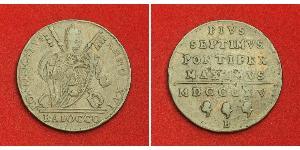
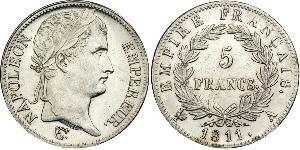


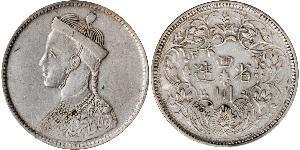

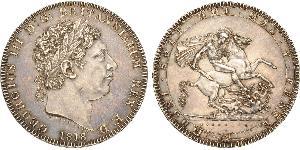
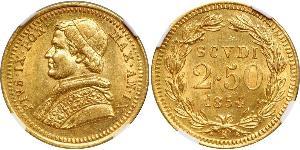
-300-150-uVshwJflPI8AAAGLXnpTnYLG.jpg)

-300-150-sIsKbzbijOMAAAFR_3lauz1K.jpg)






